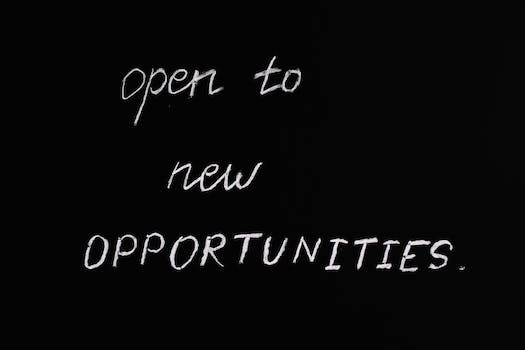How To Start A Business Art
“Unlock your creativity and turn your passion into profit with our guide on How To Start A Business in Art.”
Introduction
Starting a business in the art industry can be a challenging but rewarding experience. Whether you are an artist looking to sell your work or an entrepreneur interested in opening an art gallery or studio, there are several key steps you can take to get started. In this article, we will explore some of the essential elements of starting a successful art business, including developing a business plan, identifying your target market, and building a strong brand. By following these steps, you can increase your chances of success and achieve your goals in the art industry.
Identifying Your Niche: Finding Your Artistic Focus
Starting a business in the art industry can be a daunting task, but it can also be incredibly rewarding. One of the first steps in starting your own art business is identifying your niche and finding your artistic focus. This is an important step because it will help you determine what type of art you want to create and sell, and who your target audience is.
The first thing you need to do is take a step back and think about what type of art you are passionate about. Do you enjoy painting, drawing, sculpture, or something else entirely? Once you have identified your preferred medium, you can start to think about what type of art you want to create within that medium.
It’s important to remember that your niche doesn’t have to be something completely unique or groundbreaking. In fact, it’s often better to focus on a specific style or subject matter that you are passionate about, rather than trying to reinvent the wheel. For example, if you love painting landscapes, you could focus on creating realistic or impressionistic landscapes that capture the beauty of nature.
Once you have identified your niche, it’s important to do some research to see what other artists are creating within that niche. This will help you get a better understanding of what is already out there, and how you can differentiate yourself from other artists. You can also use this research to identify potential gaps in the market that you could fill with your own unique style or approach.
Another important aspect of finding your artistic focus is identifying your target audience. Who do you want to create art for? Are you targeting a specific age group, gender, or demographic? Understanding your target audience will help you create art that resonates with them and makes them want to buy your work.
One way to identify your target audience is to look at the types of art that are currently popular within your niche. For example, if you are creating abstract paintings, you may find that your target audience is younger, more urban, and more interested in contemporary art. On the other hand, if you are creating realistic portraits, your target audience may be older, more traditional, and more interested in classical art.
Once you have identified your niche and target audience, it’s time to start creating your art. This is where you can really let your creativity shine and start to develop your own unique style. Don’t be afraid to experiment and try new things – this is how you will develop your own voice as an artist.
As you start to create your art, it’s important to keep your target audience in mind. Think about what they would like to see, and how you can create art that speaks to them. You can also use social media and other online platforms to share your work and get feedback from your target audience.
In conclusion, finding your artistic focus is an important step in starting a business in the art industry. By identifying your niche and target audience, you can create art that resonates with your customers and sets you apart from other artists. Remember to stay true to your own passions and creativity, and don’t be afraid to try new things. With hard work and dedication, you can turn your love of art into a successful business.
Creating a Business Plan for Your Artistic Venture

Starting a business can be a daunting task, especially when it comes to the creative industry. However, with the right mindset and a solid plan, you can turn your artistic passion into a successful venture. One of the most important steps in starting a business is creating a business plan. In this article, we will guide you through the process of creating a business plan for your artistic venture.
The first step in creating a business plan is to define your business. What is your artistic venture? What products or services will you offer? Who is your target audience? These are all important questions to answer when defining your business. It is important to have a clear understanding of what your business is and what it stands for before moving forward.
Once you have defined your business, the next step is to conduct market research. This involves gathering information about your target audience, competitors, and industry trends. Market research will help you identify opportunities and challenges in the market, as well as help you develop a marketing strategy. You can conduct market research through surveys, focus groups, and online research.
After conducting market research, it is important to develop a marketing strategy. This involves identifying your unique selling proposition (USP) and developing a plan to reach your target audience. Your USP is what sets you apart from your competitors and makes your business unique. Your marketing strategy should include tactics such as social media marketing, email marketing, and advertising.
The next step in creating a business plan is to develop a financial plan. This involves estimating your startup costs, projected revenue, and expenses. It is important to have a clear understanding of your financials before launching your business. This will help you make informed decisions and avoid financial pitfalls.
In addition to a financial plan, it is important to develop an operational plan. This involves outlining the day-to-day operations of your business, such as production, inventory management, and customer service. Having a clear operational plan will help you streamline your business and ensure that everything runs smoothly.
Finally, it is important to create a timeline for launching your business. This involves setting goals and deadlines for each step of the process. A timeline will help you stay on track and ensure that you launch your business on time.
In conclusion, creating a business plan is an essential step in starting a business. It will help you define your business, conduct market research, develop a marketing strategy, create a financial plan, develop an operational plan, and create a timeline for launching your business. With a solid business plan in place, you can turn your artistic passion into a successful venture.
Marketing Your Art: Strategies for Building Your Brand
Starting a business in the art industry can be a daunting task, but with the right strategies, it can be a fulfilling and profitable venture. One of the most important aspects of starting a business in the art industry is building your brand. In this article, we will discuss some effective strategies for marketing your art and building your brand.
The first step in building your brand is to define your target audience. Who are the people that you want to reach with your art? What are their interests and preferences? Once you have a clear understanding of your target audience, you can tailor your marketing efforts to appeal to them.
One effective strategy for marketing your art is to create a strong online presence. This can include creating a website, social media accounts, and an email list. Your website should showcase your art and provide information about your business, such as your mission statement and contact information. Social media accounts can be used to share your art and engage with your audience. An email list can be used to keep your audience updated on new artwork, events, and promotions.
Another effective strategy for marketing your art is to participate in art shows and exhibitions. This can help you reach a wider audience and gain exposure for your art. When participating in art shows, it is important to have a professional display that showcases your art in the best possible light. You should also have business cards and promotional materials available to hand out to potential customers.
Networking is also an important aspect of building your brand in the art industry. Attend art events and exhibitions, and connect with other artists and industry professionals. This can help you build relationships and gain valuable insights into the industry.
In addition to these strategies, it is important to have a clear and consistent brand message. Your brand message should communicate what makes your art unique and why people should choose to buy from you. This can be communicated through your website, social media accounts, and promotional materials.
When marketing your art, it is also important to be authentic and genuine. People are more likely to connect with your art and your brand if they feel that you are being honest and transparent. Share your story and your passion for art, and be open to feedback and criticism.
In conclusion, building your brand is an essential part of starting a business in the art industry. By defining your target audience, creating a strong online presence, participating in art shows and exhibitions, networking, and having a clear and consistent brand message, you can effectively market your art and build a successful business. Remember to be authentic and genuine, and to always strive for excellence in your art and your business practices. With these strategies in place, you can achieve your goals and make a name for yourself in the art industry.
Pricing Your Art: Finding the Sweet Spot for Profitability
Starting a business in the art industry can be a daunting task, but it can also be incredibly rewarding. One of the most important aspects of starting a business in the art industry is pricing your art. Finding the sweet spot for profitability can be a challenge, but with a little bit of research and some trial and error, you can find the perfect price point for your art.
The first step in pricing your art is to do some research. Look at other artists in your industry and see what they are charging for their work. This will give you a good idea of what the market is like and what people are willing to pay for art. You can also look at galleries and art shows to see what prices are being charged for similar pieces.
Once you have an idea of what the market is like, it’s time to start thinking about your own pricing strategy. One common strategy is to price your art based on the cost of materials and the amount of time it takes to create the piece. This can be a good starting point, but it doesn’t take into account the value of your art or the demand for it.
Another strategy is to price your art based on the perceived value of the piece. This takes into account factors such as your reputation as an artist, the uniqueness of the piece, and the demand for your work. This strategy can be more effective in generating higher profits, but it can also be more difficult to determine the right price point.
Ultimately, the key to finding the sweet spot for profitability is to experiment with different pricing strategies and see what works best for you. Start by pricing your art at a level that you feel comfortable with and then adjust as needed based on feedback from customers and sales data.
It’s also important to keep in mind that pricing your art is not just about making a profit. It’s also about creating a sustainable business that can support your artistic endeavors over the long term. This means taking into account factors such as overhead costs, marketing expenses, and the time and effort it takes to create your art.
One way to ensure that your pricing strategy is sustainable is to focus on building a loyal customer base. This means creating a strong brand identity, providing excellent customer service, and offering unique and high-quality art that people will want to buy again and again.
In addition to pricing your art, it’s also important to think about how you will market and sell your work. This can include setting up an online store, participating in art shows and exhibitions, and building relationships with galleries and other art professionals.
Overall, pricing your art is a crucial part of starting a business in the art industry. By doing your research, experimenting with different pricing strategies, and focusing on building a loyal customer base, you can find the sweet spot for profitability and create a sustainable business that supports your artistic endeavors over the long term.
Networking and Collaborating: Building Relationships in the Art World
Starting a business in the art world can be a daunting task, but it doesn’t have to be. One of the most important aspects of building a successful art business is networking and collaborating with others in the industry. Building relationships with other artists, galleries, and collectors can help you gain exposure, find new opportunities, and grow your business.
The first step in networking and collaborating is to attend art events and exhibitions. This is a great way to meet other artists and industry professionals, and to get a sense of what’s happening in the art world. Attend gallery openings, art fairs, and other events in your area, and be sure to introduce yourself to other attendees. Bring business cards and be prepared to talk about your work and your business.
Another way to build relationships in the art world is to join artist groups and organizations. These groups can provide valuable resources and support, as well as opportunities to collaborate with other artists. Look for local artist groups in your area, or consider joining a national organization like the National Association of Women Artists or the American Society of Contemporary Artists.
Social media is also a powerful tool for networking and collaborating in the art world. Use platforms like Instagram, Facebook, and Twitter to connect with other artists, galleries, and collectors. Share your work and engage with others in the industry by commenting on their posts and sharing their work. You can also use social media to promote your business and upcoming events.
Collaborating with other artists can be a great way to expand your reach and gain exposure. Consider partnering with another artist on a joint exhibition or project. This can help you reach new audiences and showcase your work in a different context. Collaborating with other artists can also be a great way to learn new skills and techniques, and to gain inspiration from others in the industry.
Building relationships with galleries and collectors is also important for growing your art business. Attend gallery openings and exhibitions, and be sure to introduce yourself to gallery owners and curators. Share your work and be open to feedback and critique. Building a relationship with a gallery can take time, but it can be a valuable partnership for your business.
Collectors are also an important part of the art world, and building relationships with them can help you sell your work and gain exposure. Attend art fairs and exhibitions where collectors are likely to be present, and be sure to have a portfolio of your work on hand. Consider offering special promotions or discounts to collectors who purchase your work.
In conclusion, networking and collaborating are essential for building a successful art business. Attend art events and exhibitions, join artist groups and organizations, use social media to connect with others in the industry, collaborate with other artists, and build relationships with galleries and collectors. By building strong relationships in the art world, you can gain exposure, find new opportunities, and grow your business.
Conclusion
Conclusion: Starting a business in the art industry can be a challenging but rewarding experience. It requires careful planning, research, and a strong understanding of the market and target audience. By following the steps outlined in this guide, aspiring art entrepreneurs can increase their chances of success and turn their passion for art into a profitable business venture.





